
Mining & Trade News
Malawi Online News
Top Stories
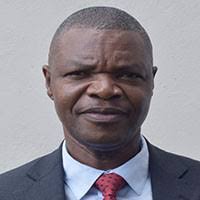
Energy
EGENCO commissions feasibility study for Kammwamba Power PlantOctober 01, 2020 / Tawina Maluwa
Electricity Generation Company (EGENCO) says it has commissioned a new feasibility study on Kammwamba coal fired power plant to update the feasibility study that was done in 2014.
In an interview with Mining and Trade Review, EGENCO CEO Wiilliam Liabunya said the Company has engaged a German consultant Fitchner to execute the study
“Kammwamba coal fired plant was given to EGENCO in 2019. It coincided well with the plans that we already had to put up a coal plant. We expect the feasibility study to take about six months, once that is concluded then we will finalize financial arrangements and embark on implementation,” said Liabunya.
Liabunya said Kamwamba Coal Fired Power Plant is among other ongoing projects such as Kapichira dredging, dredging of the Nkula pond, Tedzani IV, Wovwe expansion, Likoma solar, and Mpatamanga Hydro Plant.
He also said EGENCO is working very hard to ensure that it rehabilitates the existing power stations as well as venture into developing new plants.
Commenting on the challenges that EGENCO is facing in establishing new power sources, Liabunya said every project is unique and consequently has different challenges.
He said: “Apart from issues of financing which are crosscutting, there are really no major challenges.”
“The delay in some of the projects is simply because we need as a public company to follow procedures in every transaction that we undertake, so sometimes these processes take time to complete.”
“What you also need to understand is that power projects unlike building a house take time and needs lots of permits and approvals. Lots of planning involved to get feasibility studies, get environmental permits, implement resettlement plans, negotiate connection and power purchase agreements with off taker, arrange for financing etc.”
Asked on what Malawians should expect in terms of power generation, he said this year they have put in place a number of measures to ensure that they sustain the current improved generation capacity.
Liabunya said: “Coupled to that is the matter of adequate water that has been harvested this year in the lake so that we can use during this dry season. As you may be aware, we now have a new barrage at Liwonde which is fully automated”
“Another important aspect is that we have been able to maintain all our machines, as of today, all our machines are in perfect working condition expect for one at Kapichira whose repairs could not be completed due to travel restrictions due to COVID 19. However, with continued opening of borders we hope to have commissioning engineers and equipment from Germany to be in the country by end of this month or early next month and have the machine back online”.
Recently, local mining experts called on government to consider setting up a coal fired power plant in the northern region in order to utilize locally sourced coal.
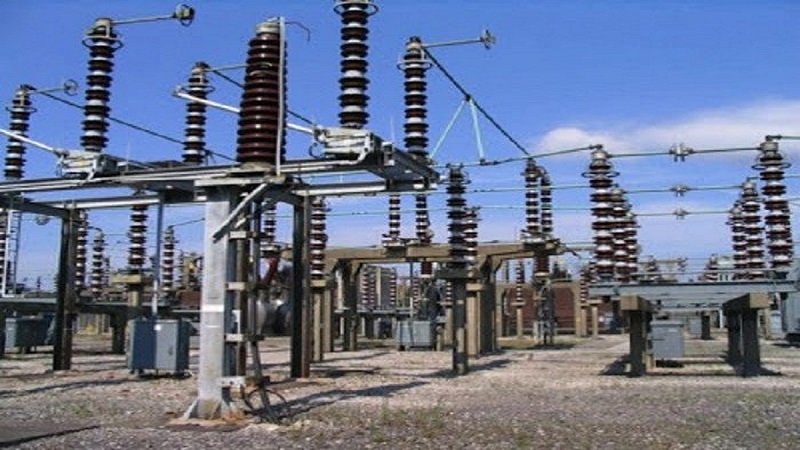
Energy
Covid-19 haunts rural electrification projectSeptember 15, 2020 / Wahard Betha
The Ministry of Energy says the novel coronavirus (Covid-19) pandemic has negatively impacted on progress in the implementation of ongoing Extended Phase 8 of the Malawi Rural Electrification Project (MAREP).
MAREP is being implemented by the Malawi Government with an aim of transforming lives of people living in the rural and semi-urban areas by ensuring increased access to electricity.
Public Relations Officer for the Department of Energy Saidi Banda told Mining & Trade Review that Covid-19 has greatly affected the project as boarder restrictions that countries have imposed to curb the spread of the disease have disrupted supply chains for construction materials.
Banda said the Extended MAREP Phase 8 requires more construction materials following the increased number of sites in the phase but the Department could not manage to acquire the materials due the boarder restrictions.
He said: “In view of the extension, additional materials were procured. However, while the suppliers were in the process of delivering materials, various countries from which the materials were coming from effected lockdowns.”
“This led to a delayed delivery of materials which has affected the completion of construction works for extended MAREP Phase 8.”
“The delay in completion of construction works for extended MAREP Phase 8 has affected subsequent activities such as way leave and compensation; and material audit for the phase.”
Banda also said the covid-19 pandemic has failed the MAREP secretariat study tour and training.
He said the study tour was aimed at learning what other countries did when coming up with Rural Electrification Agencies which the Ministry is intending to establish.
Banda said the disruption has led to the sluggish progress on the establishment of Rural Electrification Agency.
“The Ministry carries out local and foreign capacity building training for the MAREP Secretariat which has been hugely affected by the covid-19 pandemic. Secretariat had sent to foreign trainings few officers whose training calendars were appearing before the effecting of lockdowns in the respective countries of training,” Banda said.
In the year 2020, the Ministry of Energy planned a number of activities including; construction of Extended MAREP Phase 8 power lines; MAREP sites impact assessment survey; data collection for formulation of concessions for MAREP sites from Phase 1 to Phase 8; design of high voltage and medium voltage overhead power lines for MAREP Phase 9; survey of overhead power lines routes for MAREP Phase 9 sites; procurement of construction materials for MAREP Phase 9; and procurement of construction contractors for MAREP Phase 9.
The Ministry also planned to conduct: Way leave assessment and Compensation for MAREP Phase 9 sites; construction of Natural Resources College (NRC) warehouse forecourt; procurement of forklifts for MAREP materials stores; connection of low income households to electricity under Ndawala Scheme; conducting study tour for establishment of Rural Electrification Agency.
Only three activities were completed, seven are in progress while the rest are to commence in the last quarter of the year.
Banda said the completed activities include: design of high voltage and medium voltage overhead power lines for MAREP Phase 9; procurement of forklifts for MAREP construction materials storage facilities; and procurement of additional materials under Extended MAREP Phase 8.
The activities in progress include: construction of Extended MAREP Phase 8 power lines; Technical Material Audit for Extended MAREP Phase 8 sites; way leave assessment and compensation for extended MAREP Phase 8 sites; way leave assessment and compensation for MAREP Phase 9 sites; survey of overhead power lines routes for MAREP Phase 9 sites; procurement of construction materials for sites under MAREP Phase 9; and delivery of additional materials under Extended MAREP Phase 8.
The Ministry introduced the Ndawala Scheme to ensure that low income households are connected to electricity.
“This is a scheme where low income households are given soft loans with no interest to wire their houses. The loan is recovered over time by deducting 40% from the units purchased by a beneficiary,” Banda said.
Government under MAREP has managed to electrify 1074 centres across the country including 849 in Phase 8. Government policy to achieve 30% of grid extension by year 2030.
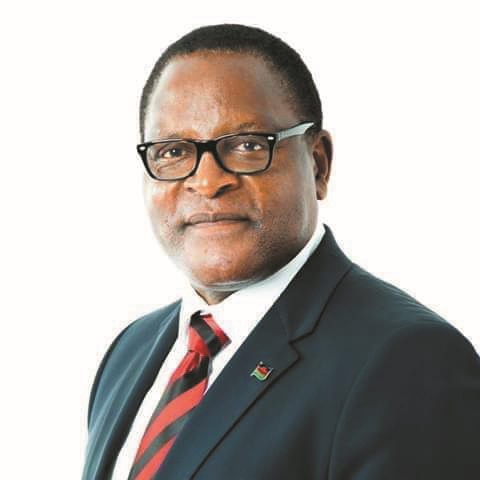
Energy
Mozambique-Malawi interconnector to be ready in 2022September 07, 2020 / Tawina Maluwa
The Malawi Government says it is working to ensure that the 2022 deadline for connecting the country’s power grid to that of Mozambique is not missed.
State President Lazarus Chakwera said in his State of the Nation Address in Parliament that his government is banking on the interconnector to address the country’s power deficit.
“Once this is done, Malawi will have access to the Southern Africa Power Pool,” Chakwera said.
Chakwera also said in order to address the power shortages, his government is facilitating construction of 60 MW solar power plant in Salima and is in the process of securing a strategic sponsor for the 350MW Mpatamanga Hydro Project on Shire River.
“We are also concluding Independent Power Producer Agreements, which will open the sector to private investors, which will require new leadership at Electricity Supply Corporation of Malawi (ESCOM) to facilitate such reforms as new tariff structures that reflect market realities,” he said.
Chakwera also said his government will revisit existing energy contracts and petroleum production sharing agreements in line with the law, ending those that are economically unsustainable and signed under questionable terms during the era of the previous administration.
Malawi’s electricity penetration rate stands at only 18%.
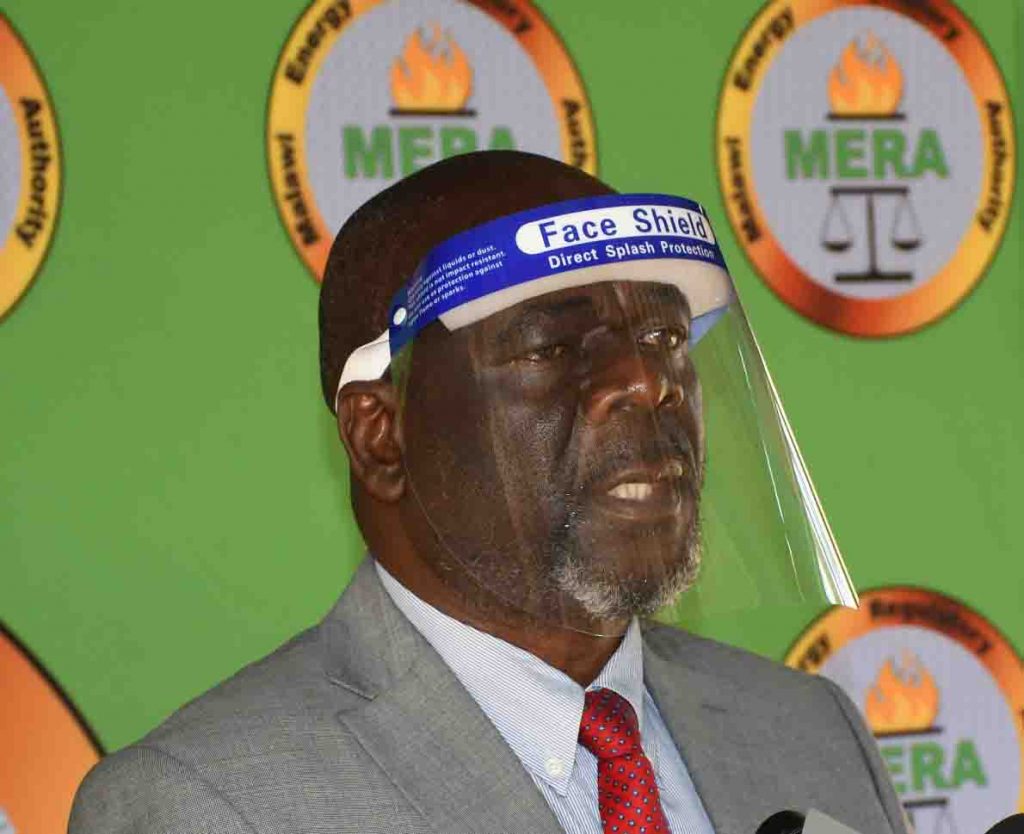
Energy
Malawi ponders nuclear powerSeptember 01, 2020 / Wahard Betha
Minister of Energy Newton Kambala says he is considering plans to initiate the development of nuclear energy as part of diversification of energy sources to deal with power interruptions and blackouts which are having a knock-on effect on the growth of the country’s economic sectors.
Nuclear is produced through enrichment of uranium and Malawi has the Kayelekera Uranium Mine in Karonga, which is being operated by ASX-listed Lotus Resources, and a number of sites with uranium anomalies.
In an exclusive interview with Mining and Trade Review, Kambala said government is pushing for diversification of power sources because the country’s power crisis is as a result of overdependence on the hydro power from the lone source, Shire River.
He said hydro power generation is prone to natural fundamental vulnerabilities largely from the climate change effects including drought and flooding which greatly affects production.
“We are exploring nuclear as a possibility in Malawi electricity generation and several companies have expressed interest in this,” he said.
Government is also working on diversifying sources of power to renewable sources such as solar, wind, geothermal and waste to energy.
Kambala said government committed a couple of Solar Independent Power Producer (IPPs) which would have come on stream by April 2020 but failed due to complications related to the Covid-19 pandemic travel restrictions.
He said in the medium and long term, Government has signed PPAs for IPPs committed to supply power from various sources such as wind, coal, and geothermal sources.
Government is also preparing to build interconnectors with Mozambique and Zambia in order to be able to tap power from the neighboring countries, the Southern Africa Power Pool (SAPP) and Eastern Power Pool (EAPP) when the Songwe River Power Generation project is finalized.
Kambala, nonetheless, said the energy diversification drive will not absolutely do away with hydro power as government plans to source more stable power from the planned Kholombidzo and Mpatamanga projects which will be supported by environmental protection initiatives started during the United States of America (USA) funded Millennium Challenge Corporation power project.”
He also disclosed that currently there is Shire Environmental Protection Trust, a body which ensures that the catchment area of the river is conserved to avoid excessive silting.
Kambala said the weeds problem that blocks power generating machines almost every year is being managed by the country’s power generating company Electricity Generation Company (EGENCO) through the EGENCO harvesters at Liwonde in Balaka district.
He said: “The hydro source still remains a feature in the Country’s Power Plans because we have lots of potential sites across the country.”
“Accordingly, Government will in the medium to long term implement additional hydro projects on other rivers such as Fufu and Songwe rivers,” he said.
Kambala said government has embarked on a campaign to encourage mutual participation of the IPPs who would bring along their own financing for the power projects in the country.
He said: “These IPPs will go into carefully negotiated contracts with government through Power Purchase Agreements (PPAs) for the benefit of the sector and the nation. Government now encourages the use of private financing in addition to the public finance sources.”
“We will continue to go into partnerships with the private energy companies or financiers for the development of the strategic power plants. Government is already currently developing the Mpatamanga Power Plant in the PPP format.”
The Minister said government intends to structure more large power generation projects in a financing model similar to that of Mpatamanga Power Plant which involves bringing on board strategic financial partners from the private sector.
“Government is looking at the short, medium and long term measures of improving the power supply to the general public and to the industry in particular,” he said.
Kambala said in the short term the country will continue to rely on the emergency solution of generators to fill the generation gap from hydro sources while it is monitoring diversification programs for delivery.
On the issue of political influence which has all along affected operations of state owned companies such as Electricity Supply Corporation of Malawi (Escom) and EGENCO, Kambala said government will ensure that the companies have capable professionals to follow applicable laws, policies and guidelines.
He said: “As a Minister, I will be engaging Board of Directors for parastatals in the Energy Sector to ensure that they understand clearly government expectations and that they will be held liable for the performance of the Institutions.”
“The Board of Directors will have to commit to the performance of their companies and they will be appraised against clearly laid down Key Performance Indicators (KPIs).”
The Minister hailed ESCOM for the campaign conducted against illegal electricity connections which has resulted in the arrests of the culprits.
Kambala, however, pointed out that most of the illegal connections were done due to the long waiting time before being connected by ESCOM, and said that his Ministry already instructed the body to ensure that all applications for connections are cleared to cut off the demand for the services.
Besides ensuring fairly quick electricity connections to customers after application, the Minister is also pushing for improved response time to faults, and improved customer care at Escom.

Energy
Construction of 350MW Mpatamanga Power plant to start in 2022.August 18, 2020 / Nelson Gonjani
Malawi’s Electricity Generation Company [EGENCO] says construction of the Mpatamanga Hydroelectric Power Plant on Shire River will start in early 2022.
Senior Public Relations Officer for EGENCO Moses Gwaza says the power utility in coordination with the Public Private Partnership Commission (PPPC) is currently working on identifying a private strategic partner for the project which will be implemented in a public private partnership (PPP) mode.
“As part of the financing for the project will come from World Bank, the Bank has their own procedures which are progressing in parallel with the strategic partner identification process,” he says.
Gwaza says EGENCO is determined to continue with the project though the coronavirus (Covid -19) pandemic is affecting some ongoing processes.
“We will of course implement Covid-19 prevention measures as well as the safety measures of the projects of this magnitude. Since at this stage most of the processes are negotiations, these are continuing on virtual modes,” he says.
The PPPC announced in June this year that it had prequalified a consortium comprising SN Power Invest Netherlands B.V and Electrite De France SA (SN Power and EDF SA) as a strategic investor for the project.
Gwaza dismisses fears that participation of international private investors in Mpatamanga will translate to higher cost of electricity in Malawi as the investors will be looking for profits.
He says: “Ideally any investor experts returns on his or her investment. But this should cause no worry as government has the interest of Malawians at heart that is why it is involved in the project through EGENCO.’’
“In other words, while ensuring that there is a return in the investment by the private investor, government will ensure that the prices are realistic and in the best interest of Malawians,
The Mpatamanga power supply project will have a main dam within the Shire river which will produce 309 megawatts. There will also be another regulating dam where 41 megawatts will be produced. This regulating dam is designed in a way that it will help to prevent flooding downstream of shire river especially during peak hour when maximum production is in progress.
Lack of adequate and reliable power supply from the national grid is one of the major factors hindering investment in heavy industries such as large-scale mining in Malawi.
The mothballed Kayelekera Uranium Mining in Karonga, which remains the country’s biggest mining investment, is powered by diesel generators which is more expansive for the company in comparison with utilization of power from the national grid.

Energy
Bids sought for construction of US$127-M Malawi-Mozambique Power InterconnectorJuly 23, 2020 / Tawina Maluwa
The Electricity Supply Corporation of Malawi (ESCOM) and the Electricidade de Mozambique E.P (EPM) are inviting sealed bids from eligible bidders for the construction of a power interconnector from Matambo Substation in Mozambique to Phalula substation in Balaka, Malawi.
The assignment will be financed by the World Bank administered Norwegian Trust Fund, the World Bank, the European Union, and Germany Technical Cooperation through KFW.
Bidding will be conducted through international competitive procurement using a Request for Bids (RFB) as specified in the World Bank’s Procurement Regulations and is open to all eligible bidders as defined in the Procurement Regulations.
The deadline for submission of bids is September 22, 2020.
The US$127-million project entails the construction of a 218 km power interconnector, thus 142 km in Mozambique side and 76 km in Malawi side.
The project will interconnect Malawi and Mozambique’s transmission systems to enable them to engage in bilateral and regional power trade through the Southern African Power Pool (SAPP).
Mozambique expects electricity exports to Malawi to begin in 2022 and the Tete-Phombeya line will also to be used to supply electricity to towns and villages located along its route in Mozambique.
Malawi’s interest in buying electricity from Mozambique was formalised in 1998 with the signing of a memorandum of understanding in its capital city Lilongwe.
This project will fund Malawi’s first interconnection to the SAPP, which is the first and the most advanced power pool in the continent providing an alternative to domestic electricity generation to improve energy security.
The interconnector will help address Malawi’s sectoral challenges, including chronic electricity supply deficits and ensure security of supply as well as reliability and affordability of electricity through imports from Mozambique and, in the future, other SAPP members.
It also reduces the potential for a power crisis based on droughts affecting the Shire River which produces up to 99% of Malawi’s electricity and addresses the need for back-up in the form of diversified external sources of power.

Energy
European consortium prequalified as strategic partner for Malawi’s 350MW hydropower projectJune 17, 2020 / Wahard Betha
Malawi has prequalified a consortium comprising SN Power Invest Netherlands B.V and Electrite De France SA (SN Power and EDF SA) as a strategic partner for the construction of the 350MW Mpatamanga Hydropower Project on Shire River.
Malawi’s Public Private Partnership Commission (PPPC) Acting CEO Audrey Mwala says in a Press Statement that after successfully passing the prequalification stage, the consortium has subsequently been invited to submit a proposal.
“During the next and final phase of the tender process, the bidder will be required to submit a proposal that demonstrates, to the Government’s satisfaction, the bidder’s capability and commitment to implement a project that is reliable and affordable for the people of Malawi,” says Mwala.
The Malawi Government intends to develop the 350MW hydropower project under a Public Private Partnership (PPP) project finance development model which will require the selected investor to form a special purpose vehicle to build and operate the power plant.
The strategic partner is expected to have 70% shareholding in the project while state-owned Electricity Generation Company (EGENCO) will retain 30%.
Mwala says a total of the 15 firms submitted expressions of interest for the project but the two European energy firms were prequalified after they teamed up and submitted a joint bid as a consortium.
The Project will consist of two hydro power plants: a main power plant, main dam and reservoir with daily storage capacity capable of generating 309MW of electricity on a peaking basis; and a regulating dam with a hydro power plant capable of generating 41MW of base load electricity, downstream from the main reservoir and power plant.
The Malawi Government partnered with the World Bank’s International Finance Corporation (IFC) as co-developer to undertake early stage development activities for the Project, including the preparation of Project Agreements, technical, environmental, and social studies and reports.
A comprehensive World Bank-financed feasibility study for the project was completed in 2018.
The Malawi Government conducted the PPP feasibility study under the PPP Act, whose report was approved by the Ministry of Finance on October 31, 2019.

Energy
Procurement of EPC Contractor for Mozambique-Malawi power interconnector progressesJune 15, 2020 / Bester Kayaye
The Malawi Government says procurement of an Engineering, Procurement and Construction (EPC) contractor for the Mozambique-Malawi power interconnector will be finalized by December 2020.
“Under the Malawi-Mozambique Interconnector Project, the two power utility companies, ESCOM Ltd and EDM of Mozambique negotiated and signed commercial agreements, including the Power Purchase Agreement. The procurement of the EPC Contractor is underway and is expected to be finalised by December, 2020,” said Minister of Finance, Economic Planning and Development Joseph Mwanamveka in his presentation of the 2020/2021 national budget.
Mwanamveka said preparations for feasibility studies for the construction of the Zambia-Malawi Power Interconnector are also underway on the Zambian side and will be used to update the feasibility study report on the Malawian side which was done a few years back.
The Malawi Government is also developing a 350MW hydropower project at Mpatamanga gorge on the Shire River under a Public Private Partnership arrangement.
Mwanamveka said currently, the process of identifying the main private investor is in progress and is expected to be completed by September, 2020.
He also said in the 2019/2020 fiscal year, Government established a new company called Malawi Power Market that will replace ESCOM as a single buyer of all generated electricity.
“This company will enable other players to enter into the power market as distributors,” he said.
He said in the near term the sectors that will drive growth include Agriculture; Wholesale and Retail trade; Mining and Quarrying; Electricity, Gas and Water; Information and Communication; and Financial and Insurance Services.
The Ministry of Finance and Economic Development has allocated K61.4 billion to boost operations of Energy, Industry and Tourism sectors representing 3% of the total budget in the 2020/2021 fiscal year.
Malawi’s 2020/2021 budget is titled “Economic Recovery, Mitigation and Building Resilience” and its priority areas include Economic growth, job Creation and Infrastructure Development.
In the Budget, the Minister has pegged country’s expenditure for the year 2020/2021 at K2.023 trillion representing 28.3% of GDP and an increase of 9.9% over the 2019/2020 midyear revised estimate.
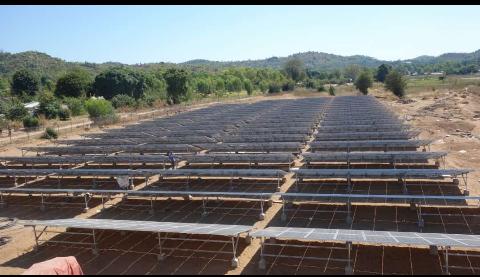
Energy
EGENCO upbeat on Likoma Power Project despite Covid-19 hiccupsJune 09, 2020 / Tawonga Nyirenda Mayuni
The Electricity Generation Company (EGENCO) says it is recording tremendous progress in the Chizumulu and Likoma Islands solar electrification project despite the challenges posed by the coronavirus (Covid-19) pandemic.
Senior PRO for EGENCO Moses Gwaza says currently overall progress of the work is at 39% for Likoma and 31% for Chizumulu.
“We are making progress, the Islands Solar Power Supply project is taking shape despite logistical challenges posed by the pandemic,” he says.
Gwaza explains that, among other things, Covid-19 affected manufacturing and shipment of some components needed in the plants.
“At some point in time, the progress of the project was at a standstill as contractors’ site officers were locked down in China and were in self quarantine upon arrival in Malawi,” says Gwaza.
He says, further to that, the project faced the challenge of flooding of the sites due to heavy rains as well as delays in tax waiver approval for equipment and other materials.
The solar project is being solely funded by EGENCO to the tune of about US$4-millon.
The project started on August 15, 2019 and was scheduled for completion by July 15, 2020 but Gwaza says the contract duration may be extended due to the logistical challenges posed by the global pandemic, which has forced airlines to suspend international flights and many countries to close their boarders.
Once completed, the solar-diesel hybrid plant is expected to supply electricity for the whole day to the people of Chizumula and Likoma who were having only 14 hours of electricity per day.































